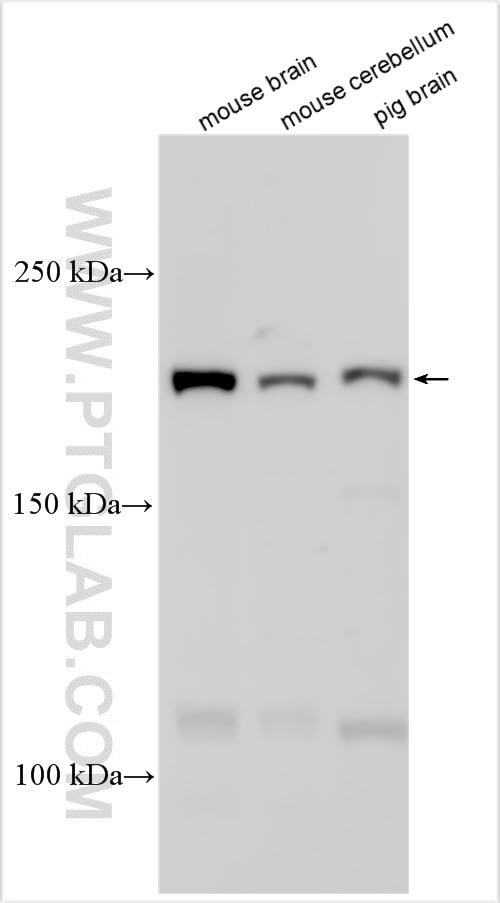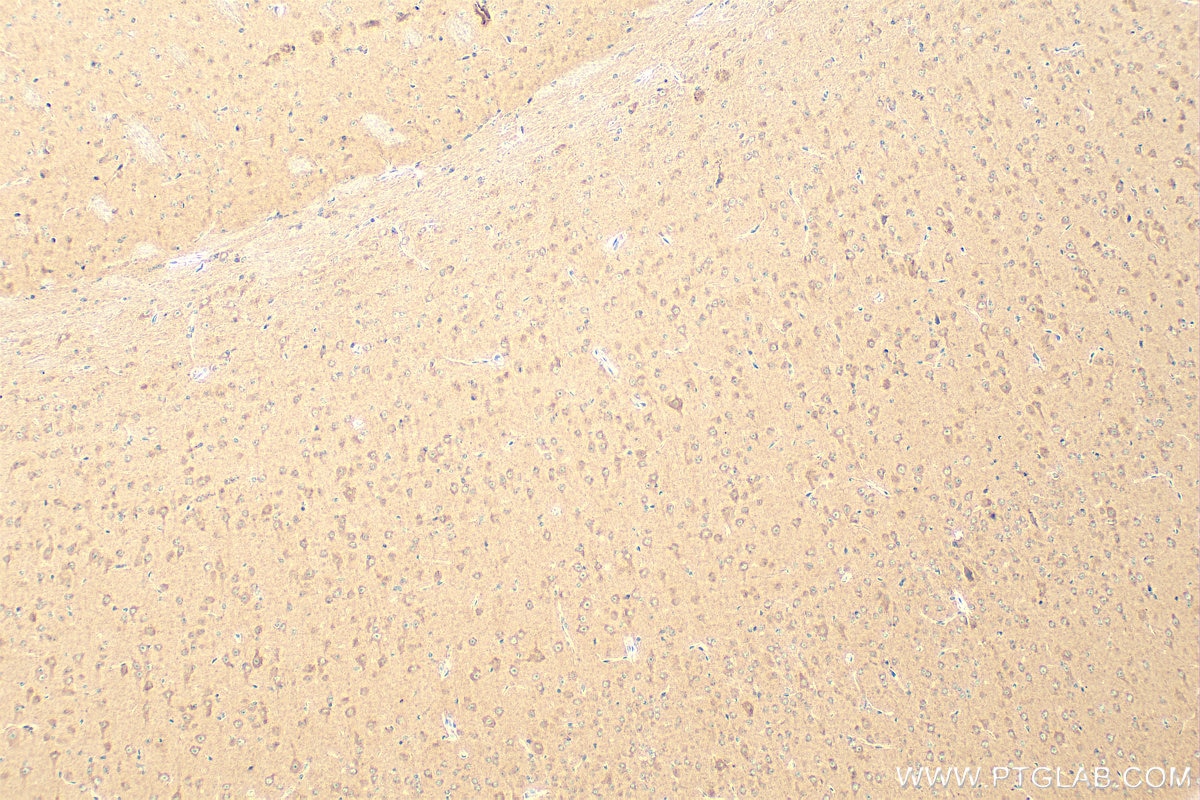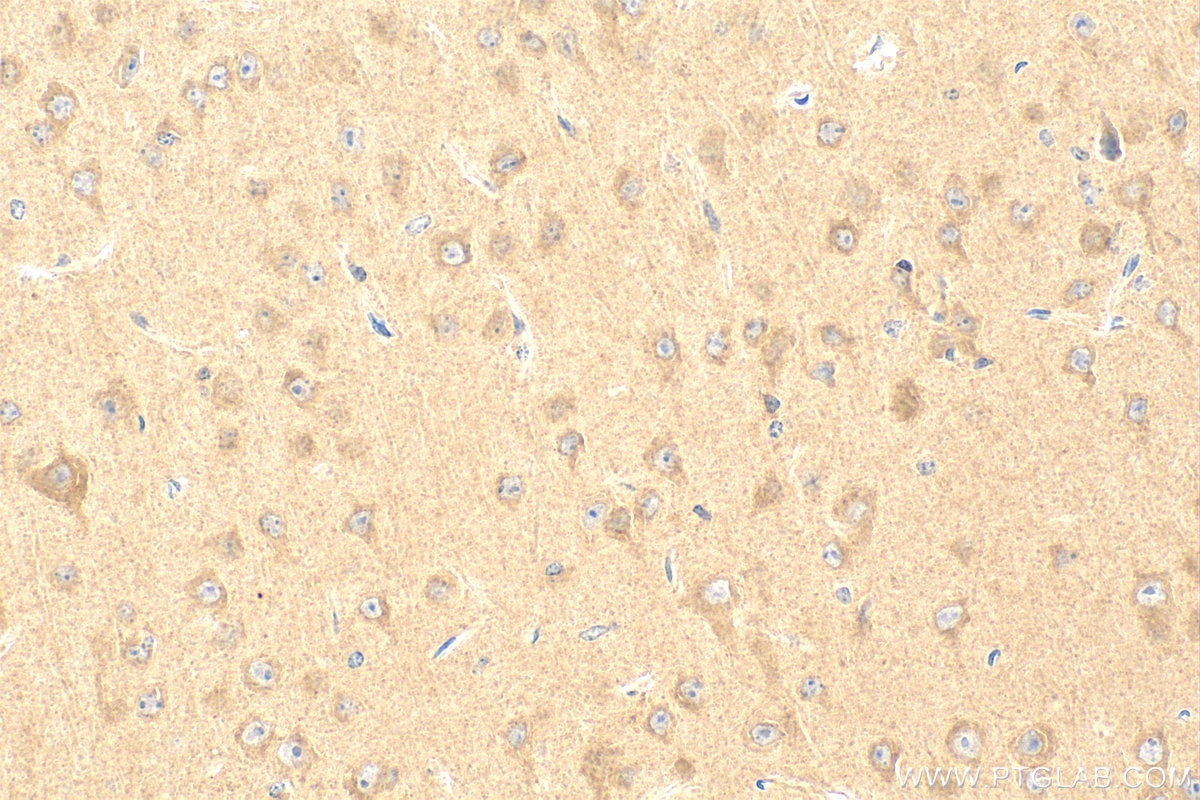Tested Applications
| Positive WB detected in | mouse brain tissue, mouse cerebellum tissue, pig brain tissue |
| Positive IHC detected in | mouse brain tissue Note: suggested antigen retrieval with TE buffer pH 9.0; (*) Alternatively, antigen retrieval may be performed with citrate buffer pH 6.0 |
Recommended dilution
| Application | Dilution |
|---|---|
| Western Blot (WB) | WB : 1:500-1:1000 |
| Immunohistochemistry (IHC) | IHC : 1:50-1:500 |
| It is recommended that this reagent should be titrated in each testing system to obtain optimal results. | |
| Sample-dependent, Check data in validation data gallery. | |
Published Applications
| WB | See 5 publications below |
| IF | See 7 publications below |
Product Information
20257-1-AP targets SCN9A/Nav1.7-Specific in WB, IHC, IF, ELISA applications and shows reactivity with human, mouse, pig samples.
| Tested Reactivity | human, mouse, pig |
| Cited Reactivity | mouse, rat |
| Host / Isotype | Rabbit / IgG |
| Class | Polyclonal |
| Type | Antibody |
| Immunogen |
Peptide Predict reactive species |
| Full Name | sodium channel, voltage-gated, type IX, alpha subunit |
| Calculated Molecular Weight | 226 kDa |
| Observed Molecular Weight | 226 kDa |
| GenBank Accession Number | NM_002977 |
| Gene Symbol | SCN9A |
| Gene ID (NCBI) | 6335 |
| RRID | AB_11182704 |
| Conjugate | Unconjugated |
| Form | Liquid |
| Purification Method | Antigen affinity purification |
| UNIPROT ID | Q15858 |
| Storage Buffer | PBS with 0.02% sodium azide and 50% glycerol, pH 7.3. |
| Storage Conditions | Store at -20°C. Stable for one year after shipment. Aliquoting is unnecessary for -20oC storage. 20ul sizes contain 0.1% BSA. |
Background Information
SCN9A, also named as NENA, PN1, ETHA, NE-NA, Nav1.7 and hNE-Na, belongs to the sodium channel family. SCN9A mediates the voltage-dependent sodium ion permeability of excitable membranes. Assuming opened or closed conformations in response to the voltage difference across the membrane, SCN9A forms a sodium-selective channel through which Na+ ions may pass in accordance with their electrochemical gradient. It is a tetrodotoxin-sensitive Na+ channel isoform. SCN9a plays a role in pain mechanisms, especially in the development of inflammatory pain. Defects in SCN9A are the cause of primary erythermalgia or autosomal recessive congenital indifference to pain or paroxysmal extreme pain disorder (PEPD). The antibody is specific to SCN9A
Protocols
| Product Specific Protocols | |
|---|---|
| IHC protocol for SCN9A/Nav1.7-Specific antibody 20257-1-AP | Download protocol |
| WB protocol for SCN9A/Nav1.7-Specific antibody 20257-1-AP | Download protocol |
| Standard Protocols | |
|---|---|
| Click here to view our Standard Protocols |
Publications
| Species | Application | Title |
|---|---|---|
Prog Neurobiol MicroRNA-96 is required to prevent allodynia by repressing voltage-gated sodium channels in spinal cord. | ||
J Neuroinflammation Glial interleukin-1β upregulates neuronal sodium channel 1.7 in trigeminal ganglion contributing to temporomandibular joint inflammatory hypernociception in rats. | ||
Inflammation Prostaglandin E2 Upregulated Trigeminal Ganglionic Sodium Channel 1.7 Involving Temporomandibular Joint Inflammatory Pain in Rats. | ||
Chin J Dent Res Non-steroidal Anti-inflammatory Drugs Attenuate Hyperalgesia and Block Upregulation of Trigeminal Ganglionic Sodium Channel 1.7 after Induction of Temporomandibular Joint Inflammation in Rats. | ||
EMBO Mol Med Cold exposure promotes the progression of osteoarthritis through downregulating APOE in cartilage | ||
J Oral Biosci Role of macrophages in trigeminal ganglia in ectopic orofacial pain associated with pulpitis |








